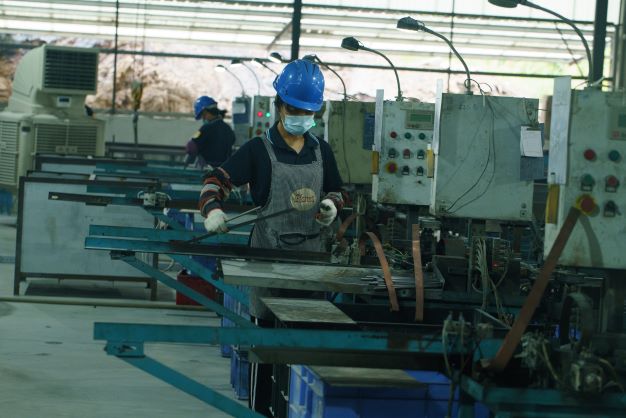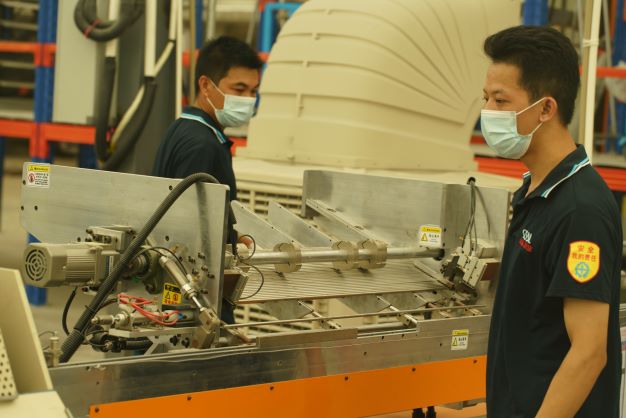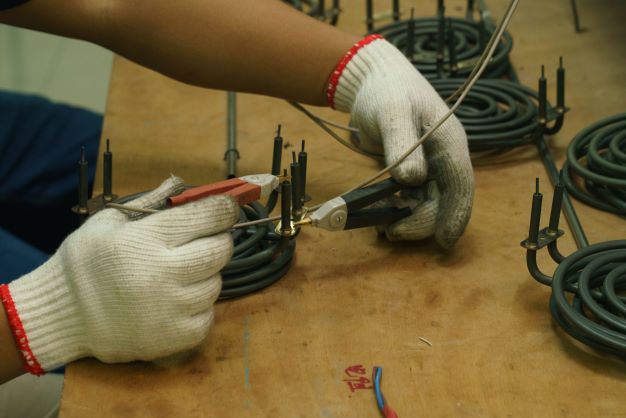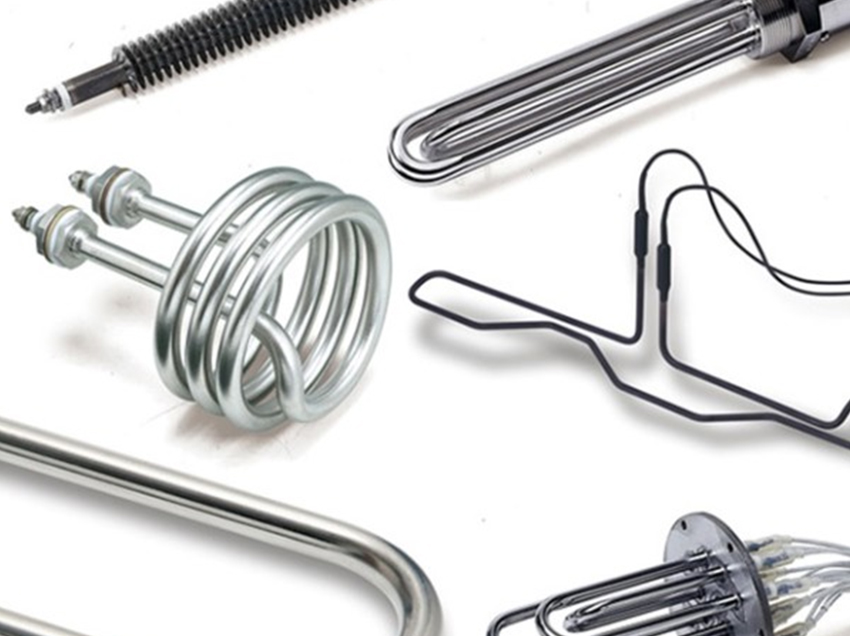Tubular Heater
- By:
Aluminum permanent mold castings often prevail when a casting requires higher strength, improved cosmetics, greater complexity, larger size, or when using a mechanical steel core can reduce costs. GSAL provides permanent mold casting services with advanced equipment, high technology and reliable quality.
- Date:2024/07/27
Heating tube is a tubular electric heating element, the materials are metal pipes, magnesium oxide powder, and resistant alloy wire. The high temperature resistance wire is evenly distributed in the high temperature resistant tube, and the magnesium oxide powder with good thermal conductivity and insulation perfomance is filled, so that high thermal efficiency and uniform heat generation are achieved.
Heating Tube's production procedure
1. Cold-formed Steel
Cold-formed steel is steel produced by cold rolling. Compared with hot-rolled steel sheets, cold-formed steel sheets have more precise thickness, smooth and beautiful surface, and various superior mechanical properties, especially in terms of processing performance. Cold rolling is to use hot-rolled steel coils as raw materials. After pickling to remove scale, cold rolling is carried out. The finished product is hard rolled coils. The strength and hardness of hard rolled coils increase due to cold hardening caused by continuous cold deformation. The surface of the cold-rolled sheet has a certain degree of smoothness, and it feels smoother to the touch, mainly due to pickling. Generally, the surface finish of the hot-rolled sheet can not meet the requirements, so the hot-rolled steel needs to be cold-rolled, and the thinnest thickness of the hot-rolled steel strip is generally 1.0mm, and the cold-formed steel strip can reach 0.1mm. Hot rolling above the crystallization temperature point, and cold rolling is rolling below the crystallization temperature point.
2. High Precision Welded Pipe
Welded steel pipe is a steel pipe made of steel plate or strip steel after crimping and welding. Since the 1930s, with the rapid development of rolling production of high-quality strip steel and the advancement of welding and inspection technology, the quality of welds has been continuously improved, and the varieties and specifications of welded steel pipes have increased day by day. Welded steel pipes are divided into straight seam welded pipes and spiral welded pipes according to the form of the weld seam. The production method is divided into: arc welded pipe, electric resistance welded pipe, high frequency and low frequency gas welded pipe, furnace welded pipe. For example, small-diameter welded pipes adopt straight seam welding, while large-diameter welded pipes adopt spiral welding; according to the shape of the end of the steel pipe, it is divided into circular welded pipes and special-shaped (square, rectangular, etc) welded pipes. Welded steel pipes for fluid conveying, galvanized welded steel pipes for low-pressure fluid conveying, electric welded steel pipes for belt conveyor rollers, etc. GSAL's electric heating tube shell is a small-diameter tube with a range of 8.0-10.0mm. The welding technique is straight seam and low-frequency welding.

3. Electrical Grade Magnesium Oxide Powder
Electrical grade magnesium oxide powder is an insulating and thermally conductive powder, which is filled between the heating wire and the metal tube. It is made of fused crystallized magnesium oxide blocks and mixed with different particle sizes (mesh numbers) in a certain proportion, directly or after adding chemical agents, it is used in electric heating tube elements as an insulation medium for heat conduction at high temperatures, referred to as magnesium oxide.
Magnesium oxide powder has the function of fixing the central position of the resistance wire, protecting the metal shell from electricity, playing the role of insulation, and conducting the heat of the resistance wire.
When the working temperature T ≤400°C, it is filled with low-temperature magnesia powder. The modified low-temperature magnesia powder is mainly used to make low-load electric heating elements with lower requirements and electric heating elements working in liquid. The electric heating element prepared by the magnesium powder has good moisture-proof performance without the need of moisture drainage and sealing. Medium and low temperature powder is suitable for cooper and iron pipes such as electric iron tubes, diswasher heating tubes, and water dispenser heating tube.
When the working temperature is 400°C <T≤600°C, it is filled with medium-temperature magnesium oxide powder and modified medium-low temperature powder, which is mainly used to make low-load electric heating elements with high requirements and electric heating elements working in liquid. The electric heating element prepared by the magnesium powder has good moisture-proof performance without the need of moisture drainage and sealing. Medium temperature powder is suitable for medium and high-grade steel pipes, iron pipes and aluminum pipes such as air conditioner electric tubes, coffee pot pipes, and sandwich pipes.
When the working temperature is 600°C <T≤ 850°C, it should be filled with high-temperature magnesia powder. High-temperature magnesia is mainly used to make medium-load and high-load air-fired electric heating elements. It can withstand heat treatment at 1050°C and needs to be sealed in time for moisture removal. High-temperature electrical grade magnesium oxide is suitable for high-grade stainless-steel tubes, such as microwave oven tubes and bread machine tubes, and Incoloy tubes.
4. Mechanical Treatment Of Electric Heating Tubes
After the magnesium oxide powder and the heating wire are installed in the tube shell, use a tube shrinker to reduce the diameter of the heating tube by 10-20%, so that the oxide medium is dense, ensuring that the heating wire is isolated from the air, and the surface of the heating tube is insulated and uncharged. The center position does not deviate and touch the pipe wall. The heating area of the electric heating tube can be increased by more than ten times.
5. Heat Treatment Of Electric Heating Tube
When the performance of the pipe material itself cannot meet the production requirements, further processing is required in the later stage to change the properties of the pipe. Among them, heat treatment technology can change the hardness, processing stress, wear resistance and so on. Heat treatment methods include annealing, normalizing, quenching, and tempering. Annealing technology is a common heat treatment method for electric heating tubes and die steel. Annealing processes include recrystallization annealing, stress relief annealing, spheroidizing annealing, and complete annealing. The purpose of annealing is mainly to reduce the processing hardness of stainless-steel, increase plasticity, facilitate cutting or pressure processing, reduce residual stress, improve the uniformity of tissue composition, and add color to the surface of the electric heating tube. For example, the technician puts the stainless-steel electric heating tube into the aging furnace with a well-adjusted ratio of natural gas and air, the ratio of natural gas and air for SUS304 is 20:1.2M²/H. The temperature of the aging furnace is between 1020°C and 1080°C, and the temperature in each section is different. After the stainless-steel pipe is baked for 2 hours, the color of different material pipes will react differently with the ratio of natural gas and air. For instance, SUS304 is deep green, SUS201 is gray, SUS840 is green, and SUS321 is black and so on.
6. Voltage Tests and Packaging


CONTACT US


Foshan City Gaoming Gaosheng Alum Co., Ltd.
We are always providing our customers with reliable products and considerate services.
If you would like to keep touch with us directly, please go to contact us





